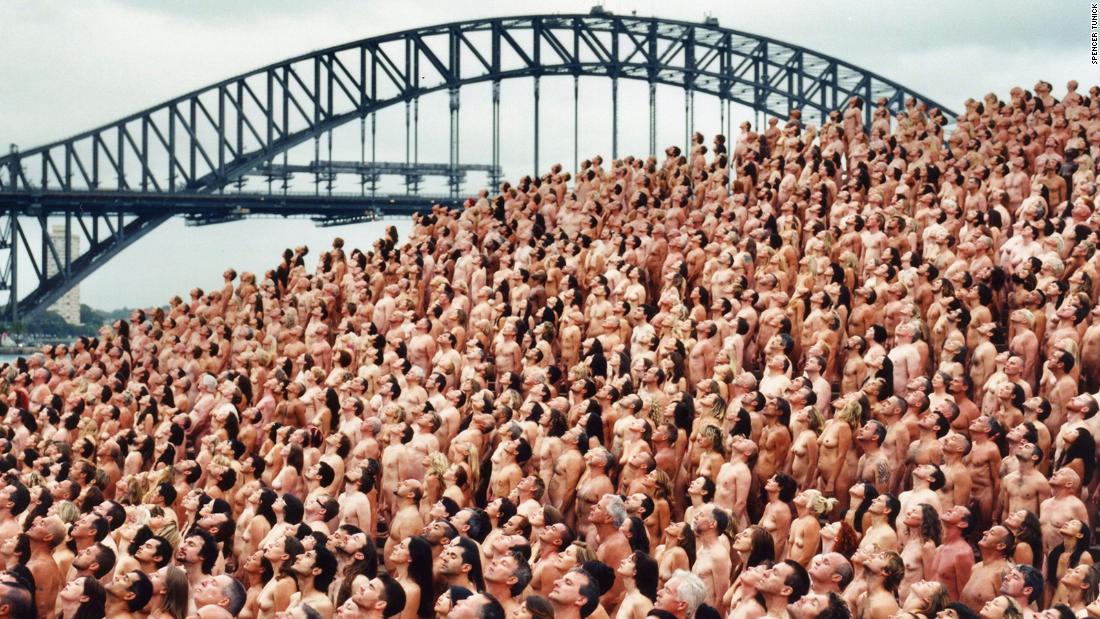
A flesh-baring crowd will assemble on a beach in Sydney on November 26, in a gathering that is half-artwork, half-public health campaign.

Volunteers pose for Tunick on a Swiss glacier. Credit: Spencer Tunick
Maggs founded Skin Check Champions in 2010, after his friend Wes Bonny was died of skin cancer at the age of 26. The charity has since received endorsements from the likes of businessman Richard Branson — and is hoping Tunick’s stark photos will draw global attention to the disease.
“We’re aiming for a minimum of 2,000 participants to represent the 2,000+ Aussies that are killed by skin cancer every year,” said Maggs in a press release.
“If the Sydney Opera House can get 5,500 on a cold morning in March 2010, we’re hoping to reach our goal of 2,500,” he said. “Everyone is welcome to participate, we welcome all body types, genders, and race – with a passion to stop skin cancer in its tracks.”

Tunick has staged around 100 large-scale nude photos in his career. Credit: Spencer Tunick
Tunick said in a statement that it was “an honor to be a part of an art mission to raise awareness of the importance of skin checks” — and added that he himself would be benefiting from the campaign, having been convinced to get his first skin check in 10 years.
Whereas other artists use paint, pastels, charcoal, clay and more, the defining material in Tunick’s oeuvre is skin.
“I use the amazing array of body types and skin tones to create my work, so it feels perfectly appropriate to take part in this effort in that my medium is the nude human form,” Tunick said.
Tunick uses his art to destigmatize nudity and encourage people to “respect the human body as an art form, like a painting or a sculpture,” he told CNN at the time.

Tunick’s Central Terminal Installation in Buffalo, New York, in 2005. Credit: Spencer Tunick
But these shoots are not easy. As thousands of volunteers strip off, city officials have been known to intervene — leading to Tunick’s arrest on multiple occasions.
